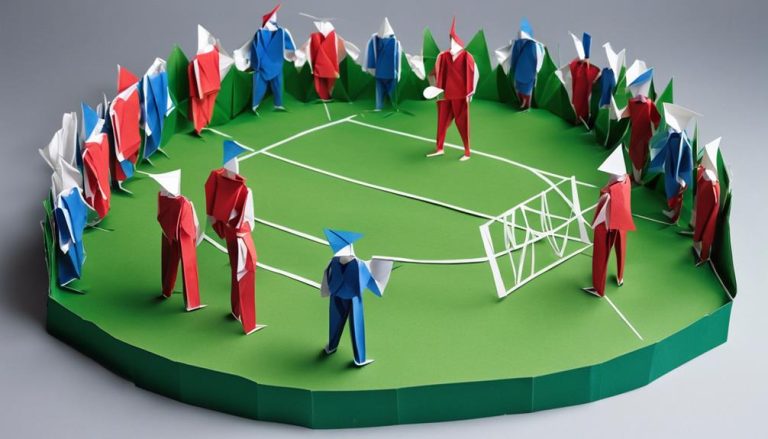General Rules of Knife Throwing
So, you've decided to explore the art of knife throwing. Before you take aim and release your blade, there are important rules to master. From understanding safety measures to perfecting your grip and stance, each aspect plays an essential role in your success. But remember, there's one key factor that can make or break your skill in this ancient craft. Intrigued to uncover the secret?
Safety Measures
To guarantee the safety of yourself and others while practicing knife throwing, always wear appropriate protective gear. Safety protocols are paramount in this art. Before each practice session, inspect your throwing knives for any signs of damage. Make sure that the blades are secure in the handles and that there are no chips or cracks that could lead to unpredictable trajectories. Regular equipment maintenance is key to preventing accidents.
When engaging in knife throwing, it is imperative to follow strict safety protocols. Establish a clear throwing area free from any obstructions. Confirm that there are no individuals within your vicinity while you practice. Injuries can occur if proper precautions are not taken. Understanding injury prevention techniques is critical. Should an accident happen, being equipped with knowledge of first aid techniques can make a significant difference. Always have a first aid kit nearby and know how to address common knife-related injuries promptly.
Proper Grip and Stance
Guarantee a stable grip and a balanced stance when preparing to throw a knife. The proper grip is fundamental to guarantee control and accuracy in your throws. Hold the knife firmly but not too tight, allowing for a fluid release upon the throw. Find a grip that feels comfortable and secure in your hand, adjusting it slightly if needed to improve your throwing technique. Experiment with different grip styles to determine what works best for you. Remember, the grip should not feel forced or strained but rather natural and effortless.
In addition to the proper grip, your stance plays an essential role in achieving a successful throw. Balance adjustment is key to maintaining control throughout the throwing motion. Position your feet shoulder-width apart, with your dominant foot slightly back for stability. Distribute your weight evenly between both feet, keeping your body relaxed and your knees slightly bent. This posture will provide a solid foundation for your throw, allowing you to transfer power efficiently from your body to the knife.
Target Selection
Selecting the appropriate target is important for honing your knife-throwing skills effectively. When choosing a target, consider its size and adjust your distance accordingly. The size of the target matters as it affects your accuracy and precision. Larger targets are generally easier to hit, making them ideal for beginners to practice their aim and build confidence. Smaller targets, on the other hand, require more skill and precision but can help you improve your accuracy a lot.
Distance adjustment is vital when selecting a target. The distance between you and the target will vary based on its size and your skill level. Beginners should start at a closer distance to make sure they can hit the target consistently before moving further away. As you progress, gradually increase the distance to challenge yourself and improve your accuracy. Remember, the further you are from the target, the more difficult it becomes to hit, especially if the target is small.
Distance and Angle
When considering distance and angle in knife throwing, your precision is directly impacted by the adjustments you make based on the target's size and your skill level. Target distance plays a vital role in determining the force and angle needed for a successful throw. The farther the target, the stronger your throw should be, but this must be balanced with accuracy to avoid missing the mark entirely. Release angle is equally important; it determines the trajectory of the knife towards the target. Experimenting with different release angles during precision training can help you find the best angle for various distances and targets.
Precision training is essential to master the art of knife throwing. By practicing consistently at different distances and adjusting your release angle accordingly, you can hone your skills and improve your accuracy. Understanding how to adapt your technique based on the target's distance is key to hitting your mark consistently. In tournament settings, where precision is paramount, having a strategic approach to distance and angle can give you a competitive edge. Developing a tournament strategy that considers these factors can help you perform more confidently under pressure.
Practice and Patience
To excel in knife throwing, consistent practice and unwavering patience are indispensable elements for refining your skills to a professional level. Technique refinement and muscle memory are essential aspects that can only be honed through dedicated practice. Building muscle memory involves repeating the same motions over and over until they become second nature. This level of familiarity with your movements is what will set you apart in the art of knife throwing.
| Practice Tips | Benefits | Common Mistakes |
|---|---|---|
| Regular practice sessions | Enhances technique | Skipping practice sessions |
| Focus on one technique at a time | Improves muscle memory | Trying to learn too much too soon |
| Use targets of varying sizes | Enhances accuracy | Ignoring accuracy for speed |
| Track your progress | Motivates improvement | Not celebrating small victories |
| Stay patient with yourself | Builds consistency | Getting frustrated with slow progress |
Consistency in your practice routine is key to maintaining progress. Without consistency, your muscle memory and technique will suffer. Patience is equally important. Rushing through practice or becoming frustrated with slow progress can hinder your development. Stay mentally focused on your goals, and remember that mastery in knife throwing is a journey that requires time and dedication.
Frequently Asked Questions
What Are the Best Types of Knives for Knife Throwing?
When choosing knives for throwing, opt for a balanced weight and grip conducive to control. Validate proper rotation for accuracy. Experiment to find the best fit for your technique and style.
How Can I Make My Own Knife Throwing Target at Home?
To create a DIY target for knife throwing in your backyard, gather materials like wood, cardboard, and old rugs. Build a sturdy frame and attach layers of soft materials to absorb the impact. Confirm safety and enjoy your setup.
Are There Any Special Techniques for Throwing Knives in Windy Conditions?
In windy conditions, adjusting your technique is important. Consider the wind speed and its effect on knife rotation. Embrace the challenge and angle your throws slightly, adapting to the elements. Stay focused and watch those blades soar!
Can Knife Throwing Be a Competitive Sport?
In knife throwing, techniques blend accuracy with speed. It's both a performance art and competitive sport. Mastering skills elevates you, transforming each throw into a precision dance of power and finesse, a thrilling challenge.
Are There Any Specific Rules or Regulations for Knife Throwing Competitions?
In knife throwing competitions, safety precautions are essential. Always follow regulations to prevent accidents. Each throw is scored based on accuracy and technique. Keep focused, precise, and aim for the bullseye every time.






